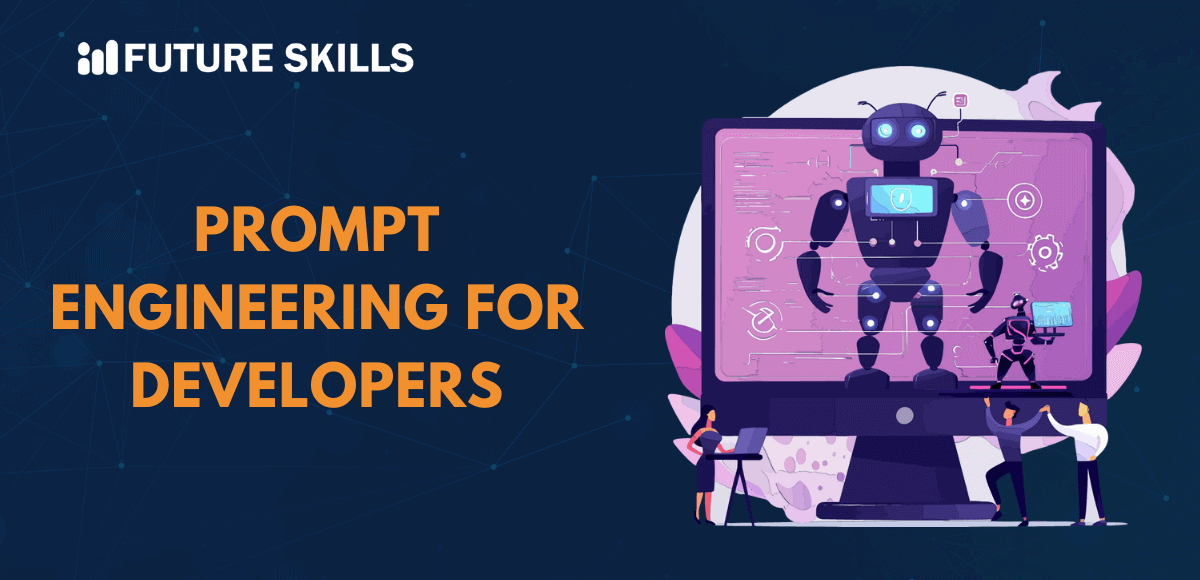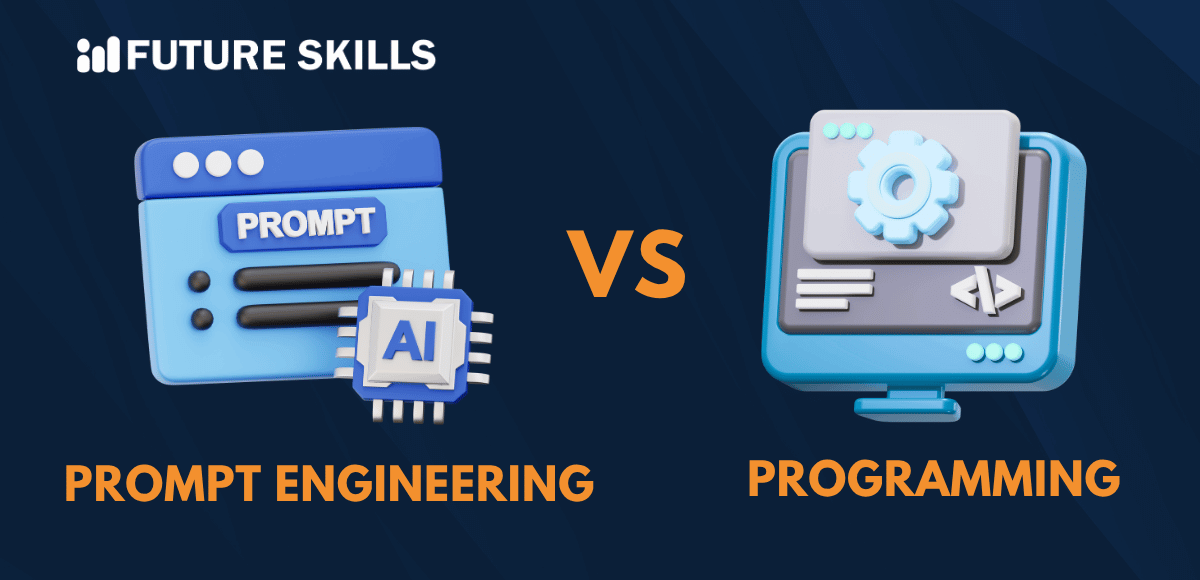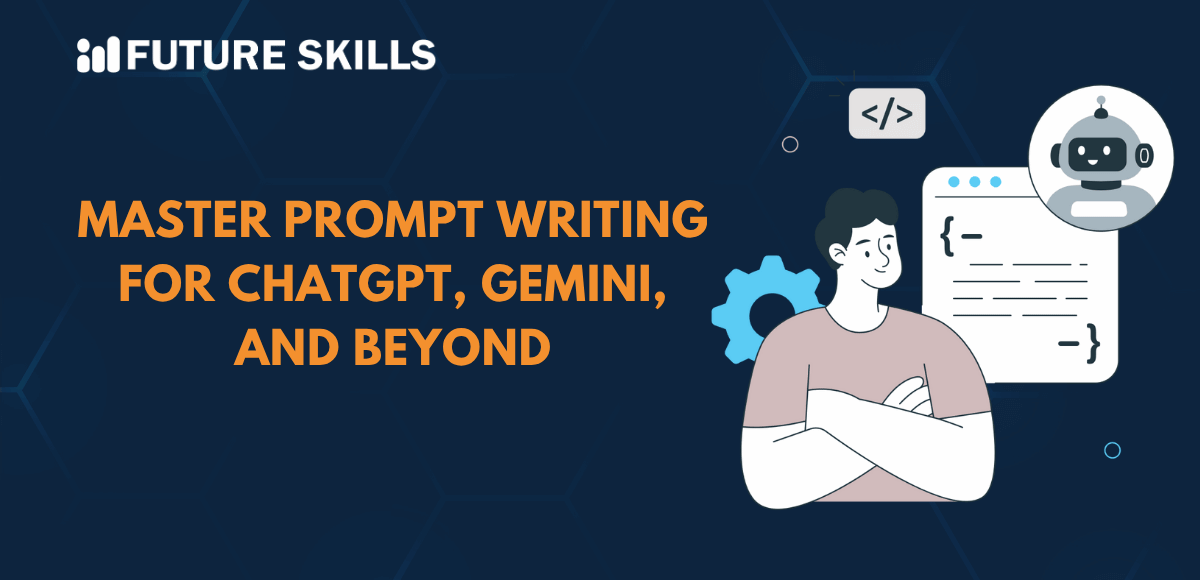Artificial intelligence has introduced innovative technological advancements for businesses and the everyday lives of people. People can talk to machines and request them to complete certain tasks, such as ordering groceries or preparing an itinerary for vacations. Businesses can use AI to automate workflows and offer better personalization in customer service.
What is the secret behind such innovative applications of AI? The answer points to prompt engineering. Interestingly, you don’t need a PhD in machine learning to use prompt engineering for developers to guide and discover the magic that empowers generative AI applications. Let us find some important insights that every developer must know before working on prompt engineering projects.
The Relationship of Prompt Engineering and LLMs
Generative AI has been bringing AI closer to people by leveraging Large Language Models or LLMs. Prompt engineering is an integral discipline of AI that helps in the development and optimization of prompts to ensure the efficient use of language models.
The responses to queries like “What is prompt engineering for developers?” can also help with a better understanding of the features as well as limitations of LLMs. Language models can process information like humans by browsing through massive collections of words and the relationships between them to understand the meaning of natural language queries.
LLMs can use the knowledge gained from training datasets to perform different tasks such as language translation, generating interactive dialogue and writing research papers. LLMs can serve as translators, partners in creative tasks and storytellers.
However, language models can work their magic only by using the right instructions or prompts that guide the responses of the model. Prompt engineering helps refine the prompts to generate relevant and accurate outputs that meet your expectations.
Level up your ChatGPT skills and kickstart your journey towards superhuman capabilities with Free ChatGPT Course.
What are the Important LLM Settings?
Developers working on prompt engineering projects must know that they would have to interact with language models through APIs. Configuration of a few parameters can help in achieving different results from prompts and modifications in these settings can enhance the reliability and accuracy of responses. The best practices of LLM prompt engineering for developers involve experimentation to identify the right settings for different use cases. Here is an outline of the common LLM settings developers must know for any prompt engineering project.
-
Temperature
Temperature is an important determinant of randomness in the responses by language models. Lower temperatures ensure that language models offer more deterministic output. On the other hand, higher temperature can lead to more creative and diverse outputs.
-
Max Length
The ‘max length’ setting of an LLM required in prompt engineering for web developers is also a crucial contributor to LLM performance. You can specify the max length to prevent language models from generating irrelevant or long responses.
-
Frequency Penalty
Frequency Penalty implements a penalty on the next token with respect to the number of times a token has appeared in the prompt and the response. A higher frequency penalty would reduce the likelihood of a word appearing in responses.
-
Stop Sequences
Stop sequence refers to the string which prevents the model from creating new tokens. Specification of stop sequences is a trusted way of controlling the structure and length of a model’s response.
-
Presence Penalty
The presence penalty is also another important LLM setting in any prompt engineering for developers’ guide for its distinctive purpose. It is the same as the frequency penalty, albeit with the same penalty for the repetitive use of tokens. A higher presence penalty can help models generate creative and unique text. However, developers must change either the frequency penalty or presence penalty rather than both.
-
Top P
Top P is an important sampling technique that involves temperature and helps in controlling the deterministic nature of language models. Developers must maintain a low ‘top p’ to obtain factual and accurate answers from language models. The best practices for modifying LLM settings suggest that developers must not modify the temperature and Top P at the same time.
Embark on a transformative journey into AI, unlocking career-boosting superpowers through our Certified AI Professional (CAIP)™ Certification program.
What are the Important Elements in a Prompt?
Anyone who has used ChatGPT knows that it works by entering simple instructions in natural language. It feels like interacting with a friend or an expert in a specific subject. With the right guide to ChatGPT prompt engineering for developers, you can understand that prompts include specific elements. The four important elements of a prompt include instruction, context, input data and indicator of the desired output.
Each element serves a distinctive purpose for the prompt. The instruction explains the specific task that a language model must perform. The context of a prompt refers to the additional context or external information that guides the model to offer better responses.
Input data of a prompt refers to the question or the task that you want to solve with the language model. The output indicator defines the format or type of output you want from the model.
Enroll now in the AI for Business Course to understand the role and benefits of AI in business and the integration of AI in business.
Important Prompting Techniques for Developers
Prompt engineering focuses on developing a better understanding of the functionalities of LLMs and creating prompts to effectively communicate your objectives to language models. The workflow of LLM prompt engineering for developers involves using a combination of different prompting techniques.
Prompting techniques help developers in exploring the possibilities of using language models for a diverse range of tasks. Here is an outline of some of the most common prompting techniques that developers use for prompt engineering projects.
-
Zero-Shot Prompting
Zero-shot prompting involves providing a prompt directly to LLMs without additional information or examples. It is an important prompting technique for general tasks in which the LLM can generate creative output based on its training data.
-
Few-Shot Prompting
Few-shot prompting takes zero-shot prompting to the next level by providing a few examples of the desired output in the prompt. Guides for questions like “What is prompt engineering for developers?” can help you understand that few-shot prompting is ideal for tasks where you need accuracy and consistency. For example, few-shot prompting is useful for generating text for a specific domain or in a desired format.
-
One-Shot Prompting
As the name implies, one-shot prompting involves providing one example of the output you want from the language model. Insights from any prompt engineering for developers guide can help you understand the purpose of one-shot prompting. Developers can use one-shot prompting to empower LLMs for providing answers on a specific topic, in a specific tone or style.
-
Contextual Augmentation
The list of prompting techniques also include contextual augmentation that works through facility of relevant background information. You can use contextual augmentation to improve coherence and accuracy in the responses by language models. For example, you can enhance a historical fiction prompt with detailed information on the desired era.
-
Human-in-the-Loop
Human-in-the-loop is a prominent addition to any guide on prompt engineering for web developers as it ensures continuous improvement of prompts. It leverages human feedback and uses an iterative process to refine the prompts to achieve optimal results.
-
Chain-of-Thought Prompts
Chain-of-thought prompting is an advanced prompting technique that emphasizes breaking down complex tasks into manageable components. It opens up the horizon for reasoning alongside strengthening logic. The process is similar to dividing a complex mathematics equation into small instructions that the language model can process.
-
Meta-Prompts and Combinations
Meta-prompts are an innovative concept in prompt engineering as they involve fine-tuning the behavior of LLMs. Developers can also rely on combination of different prompting styles to achieve their desired tasks. Meta-prompts are an integral principle for prompt engineering. On the other hand, prompt combinations ensure the simultaneous use of different prompting techniques.
Excited to understand the crucial requirements for developing responsible AI and the implications of privacy and security in AI, Enroll now in the Ethics of Artificial Intelligence (AI) Course.
Effective Prompting Strategies for Developers
One of the most crucial highlights of ChatGPT prompt engineering for developers points at the strategies recommended by OpenAI for effective prompting. Here are the most important strategies that can help developers get better results from prompt engineering.
-
Specify Clear Instructions
Developers should provide clear instructions to language models to obtain the desired output as the models cannot read your mind.
-
Provide References and Examples
Developers can avoid the generation of fake or irrelevant responses from language models by providing examples and reference text.
-
Split the Complex Tasks
Complex tasks can lead to higher error rates. Therefore, developers must redefine complex tasks as simpler tasks.
-
Give Some Space to the Model
Language models can give wrong answers when you ask them to respond right away. Developers must ask the model to follow a chain of thought before coming up with a response.
-
Systematic Testing of Changes
You can improve the performance of language models only by measuring the performance effectively. Modifications to prompts must lead to net positive results on the performance of language models.
-
Leverage External Tools
Developers should rely on external tools to make up for the shortcomings in the language model. For example, you can use a code execution engine or a text retrieval system.
Final Words
The brief outline of important insights from the prompt engineering for developers guide showcases the essential concepts that every developer must know before working with prompts. Developers must understand the different elements of prompts and the common prompting techniques to get the best results from prompts. With the help of professional training, you can become a prompt engineering expert. Find the ideal training resources on prompt engineering and discover new possibilities with AI right now.






